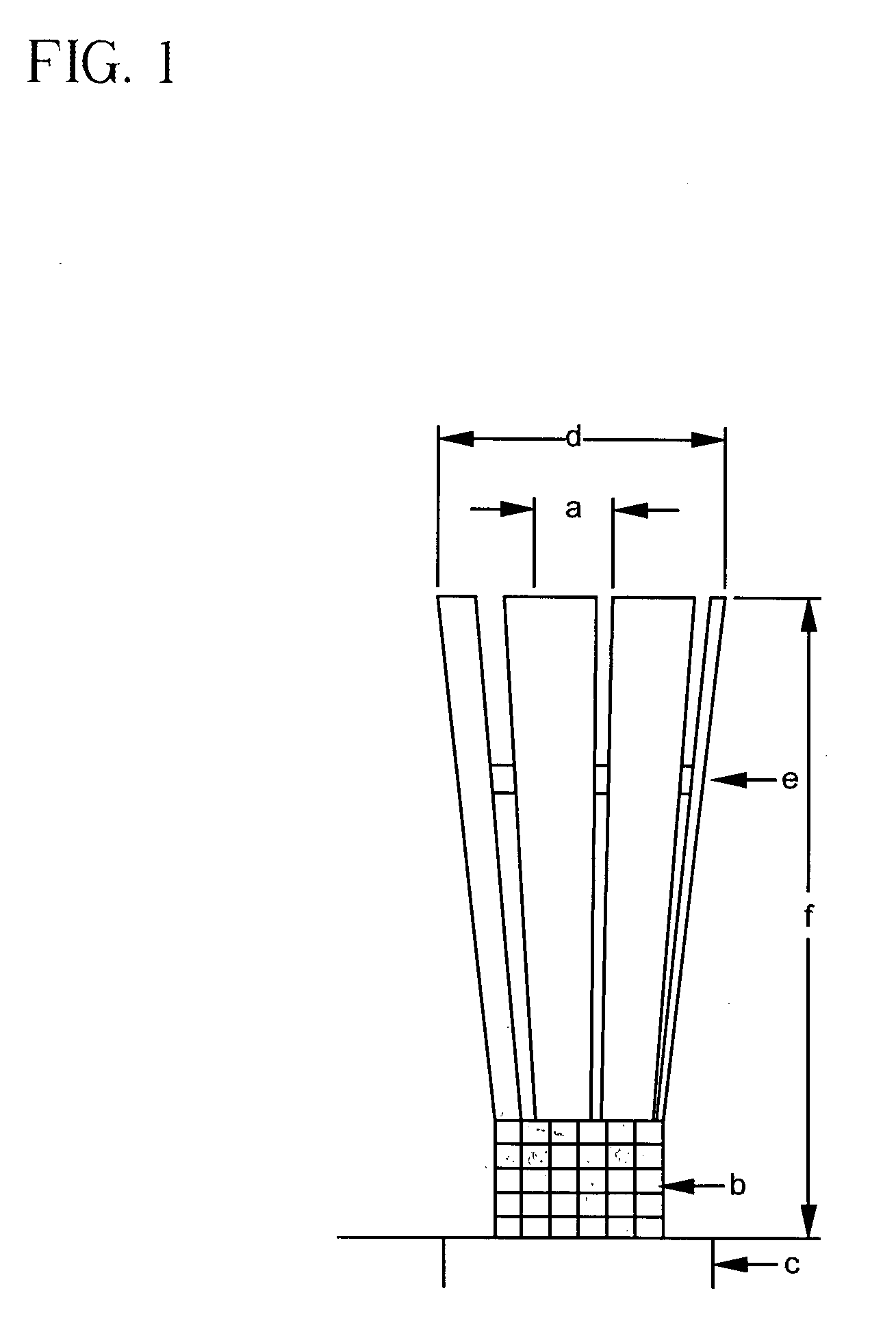Preparation of polyethylene films
a technology of polyethylene and thin film, applied in the direction of synthetic resin layered products, filament/thread forming, textiles and paper, etc., can solve the problems of md tear, impact strength loss, and inability to achieve “breakthrough” success of blending lldpe and hdpe, and the difficulty of processing lldpe-rich blends on hdpe film extruders
- Summary
- Abstract
- Description
- Claims
- Application Information
AI Technical Summary
Benefits of technology
Problems solved by technology
Method used
Image
Examples
example 1
Preparation of HMW-MDPE
[0027] A catalyst is prepared according to U.S. Pat. No. 4,464,518. The catalyst is dispersed in hexane to yield catalyst slurry that contains about 1.4 wt % of solids. The catalyst slurry (0.059 parts per hour), triethyl aluminum co-catalyst (0.0033 parts per hour), hexane (41.0 parts per hour), 1-butene (0.37 parts per hour) and ethylene (16.9 parts per hour) are continuously fed into a first reactor. The reactor pressure is controlled at about 140 psig, the temperature at 82° C., and the molar ratio of hydrogen to ethylene in the vapor space at about 3.8 to give a first polymer. The first polymer has a MI2 of 220 dg / min and a density of 0.95 glcc.
[0028] The first polymer is transferred to a flash drum, where portions of the volatile materials are removed. The mixture is then transferred to a second reactor. Hexane (42.9 parts per hour), 1-butene (1.23 parts per hour) and ethylene (18.6 parts per hour) are continuously fed into the second reactor. The reac...
example 2
Blend having LLDPE / HMW-HDPE Weight Ratio of 80 / 20
[0031] The HMW-MDPE prepared in Example 1 is blended with a commercial LLDPE GS707, product of Equistar Chemical Company, in a weight ratio LLDPE / HMW-HDPE of 80 / 20. The LLDPE has a MI2 0.70 dg / min and density 0.92 g / cc. The LLDPE and HMW-MDPE resins are dry blended and fed into extruder. The blend has MI2 0.55 dg / min and density 0.923 g / cc. The resulting blend is processed on a grooved feed extruder equipped with the FIOD attached to a 120 mm die with a 1.2 mm die gap producing 0.5 mil film. The film is produced at a stalk height of six die diameters at a blow up ratio (BUR) of 4:1. The film has an MD tear of 85 g and TD tear of 356 g.
examples 3-11
Various LLDPE / HMW-MDPE Blends
[0032] The procedure of Example 2 is repeated by varying the LLDPE / HMW-MDPE / ratio and the LLDPE used. The results are listed in Table 1, which show that both MD and TD tears increase with the increase in the ratio of LLDPE / HMW-HDPE. All of the blends show excellent bubble stability on the high stalk film line with FIOD.
PUM
| Property | Measurement | Unit |
|---|---|---|
| density | aaaaa | aaaaa |
| density | aaaaa | aaaaa |
| density | aaaaa | aaaaa |
Abstract
Description
Claims
Application Information
 Login to View More
Login to View More - R&D
- Intellectual Property
- Life Sciences
- Materials
- Tech Scout
- Unparalleled Data Quality
- Higher Quality Content
- 60% Fewer Hallucinations
Browse by: Latest US Patents, China's latest patents, Technical Efficacy Thesaurus, Application Domain, Technology Topic, Popular Technical Reports.
© 2025 PatSnap. All rights reserved.Legal|Privacy policy|Modern Slavery Act Transparency Statement|Sitemap|About US| Contact US: help@patsnap.com

